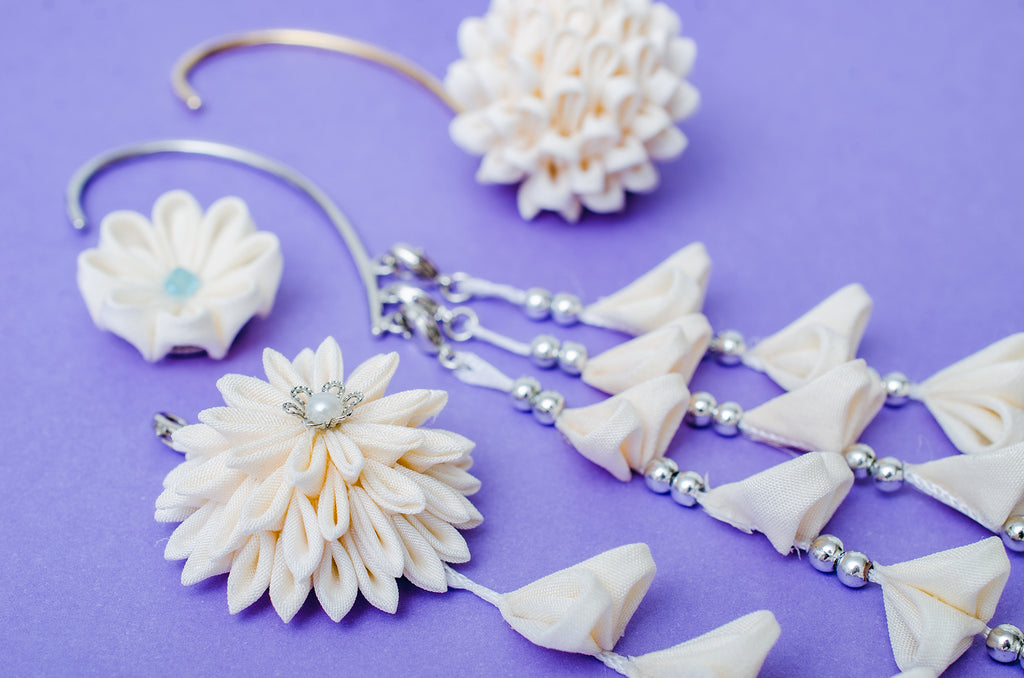つまみ細工 / TSUMAMIZAIKU
和の美、四季の彩をつまみ細工にのせて…
Japanese beauty and the colors of the four seasons through Tsumami-zaiku...
華やか、雅やかな京都で生まれ、宮中の絢爛な美への憧れを載せ江戸にわたり、 凛々しく、「粋」な町民文化によって育まれた 「つまみ細工」 。
正絹をつまみ、折り畳み 花鳥風月を表す超絶技巧は、悠久の美への探求が生み出した 日本が誇る伝統美。
〝時代を超えた真の美で 髪を、暮らしを彩りたい〟。故郷「火の国・水の国」熊本で培った 〝四季彩〟美に熱い想いをのせて。
全ての皆様に無二の美を―。
The art of creating Tsumami-zaiku was born in the gorgeous and graceful city of Kyoto, and was later nurtured by the dignified and stylish culture of the townspeople in Edo (present-day Tokyo), who were inspired by the splendor and beauty of the imperial palace.
To create Tsumami-zaiku, artisans pinch and fold pure silk to express the beauty of flowers, birds, the wind, and the moon. This superb technique preserves a traditional art that is the pride of Japan, created through an eternal quest for beauty.
By decorating hair and people’s lives with exquisite natural designs over many years, these craftworks express the passion for the beauty of the four seasons that has been cultivated in our craftswoman’s hometown, Kumamoto, the “Land of Fire and Water.”
We dream of sharing this unique beauty with everyone.
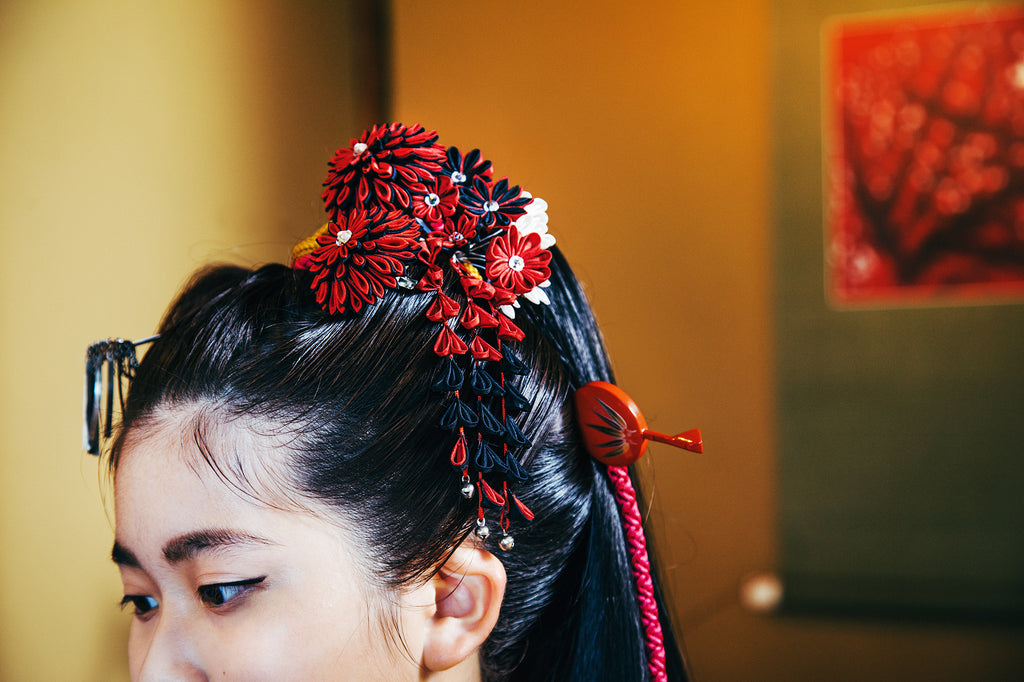
つまみ細工とは
What is Tsumami-zaiku?
絹、綿などの小さな布を折り、つまみ、「丸つまみ」「剣(角)つまみ」といった複数の技法を組み合わせて、花鳥風月を形づくる江戸時代から伝わる伝統工芸です。
四季、節目ごとに女性たちの櫛やかんざしを彩り、東京都では「江戸つまみ簪」が伝統工芸品に指定されています。
Tsumami-zaiku is a traditional Japanese handicraft that originated in the Edo period (1603-1867). Artisans pinch and fold thin pieces of silk or the cotton cloth used in kimonos to create an object, typically one reflecting the beauty of nature, such as flowers, birds, the wind, or the moon, by combining several techniques such as "round pinches" and "sword (square)” pinches.
The Edo Tsumami Kanzashi, one special product of Tsumami-zaiku has been officially designated as a traditional handicraft by the Tokyo Metropolitan Government.
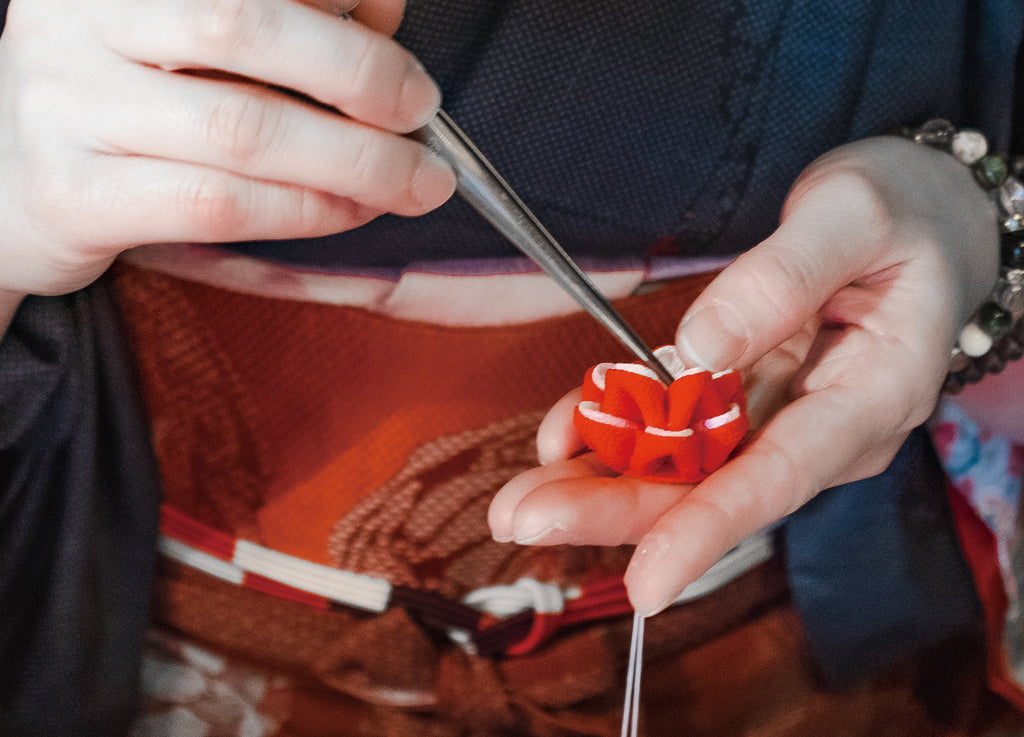
制作工程(正絹の羽二重生地を使用の場合)
Production Process (when using double-layered pure silk)
1. 生地を裁断する
1. Cut the fabric

2. 糊をこねる
2. Knead the glue paste
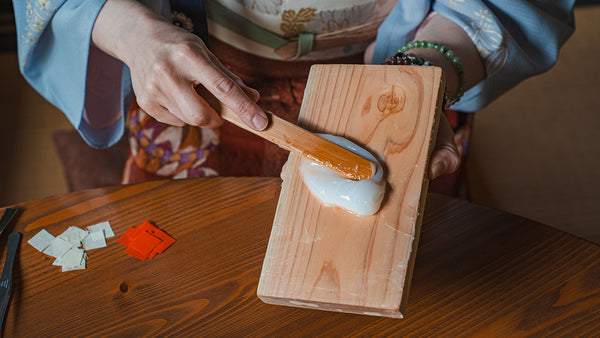
糊板と糊ベラをを使い光沢や粘着が でるまでしっかりこねる。 手前で俵状にして糊ベラを寝かせて 糊を押し出すような形で 1~1.5㎜程の厚さで均等に伸ばす。
3. 花弁を摘む
3. Pick petals
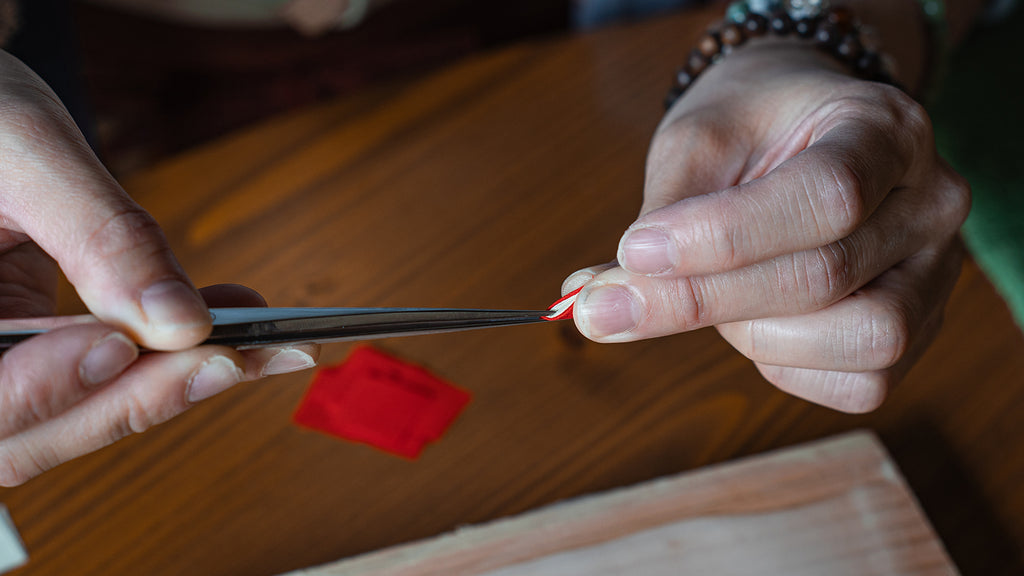
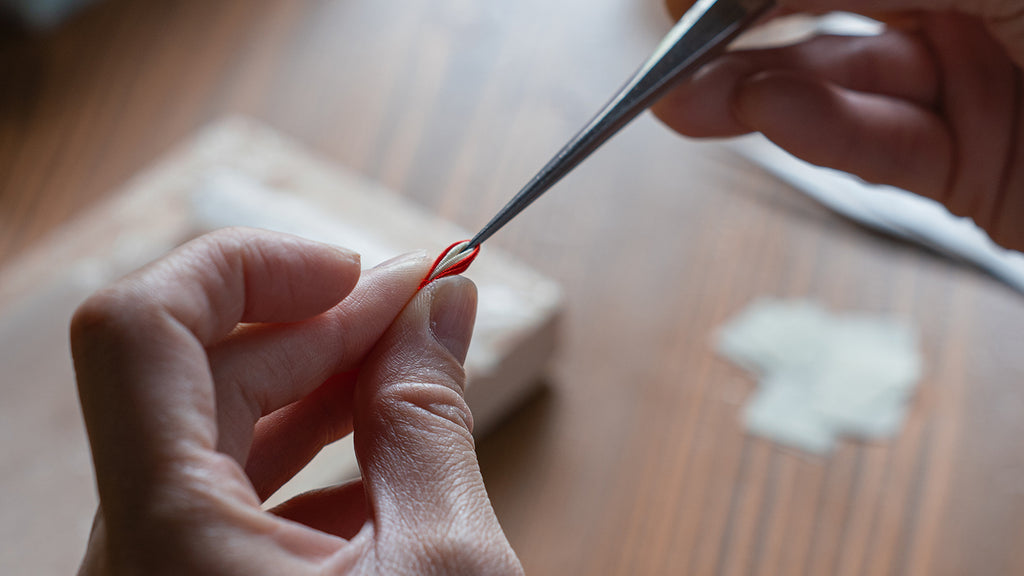
4. 葺く
4. Apply petals, “Fuku”

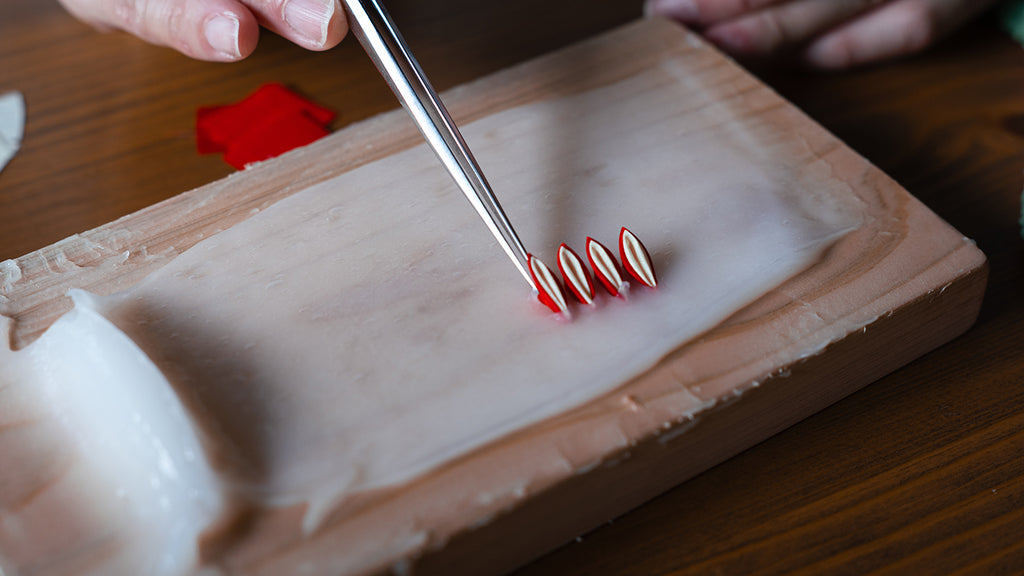
5. 花芯をつける
5. Attach the flower core

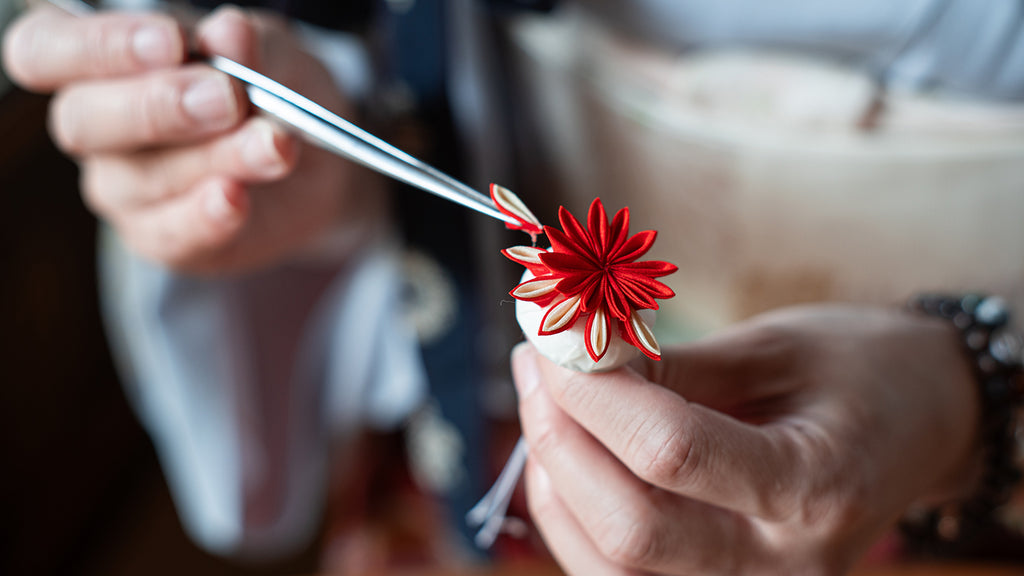
7. 完成
7. Completion
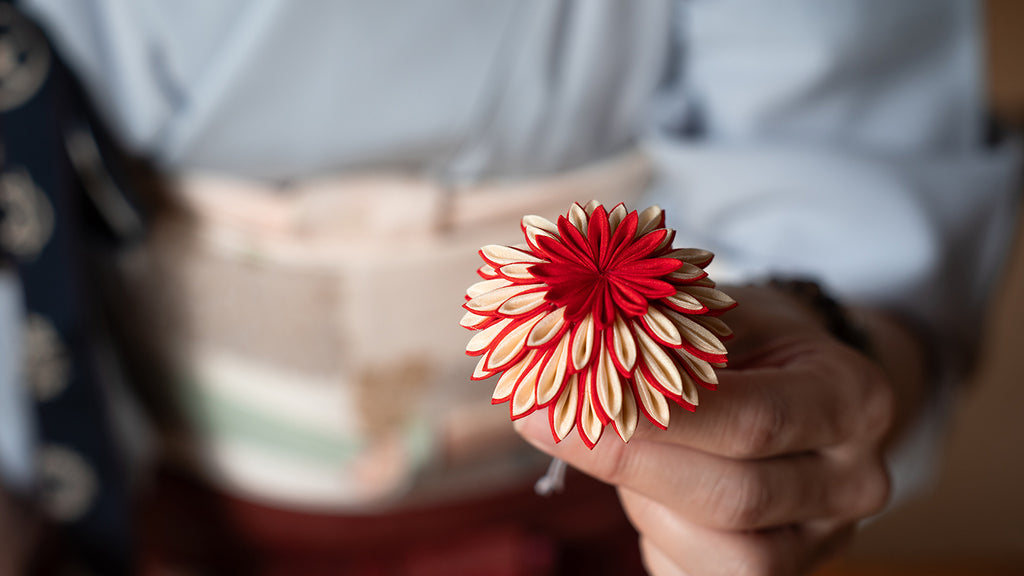

※ "Fuku" is synonymous with "to overlap" in the context of roofing tiles.
工芸士紹介
ほっこり。 永田もえ

熊本県出身。師範であった祖母の影響で幼少期に日本舞踊を習い、着物は生活を彩る重要な存在でした。
雅な舞妓さんへの憧れは強く、特に舞妓さんが着けていた簪(かんざし)に魅了されました。
着物を使った和雑貨や本物と見紛う樹脂の草花木の制作、指導をしていた母に背中を押されて独学で技術習得に励みました。
プロとして走り始めました2016年。熊本地震で甚大な被害に遭ったことを機に、兄が住む栃木県に移住。母と共に「ほっこり。」を立ち上げ、作家の道を歩み始めることになりました。
得意とする伝統的な簪は、花弁が連なるような「さがり」一つ一つが可憐に揺れ、女性をさらに凛と美しく際立たせます。「関東にない華やかな色使い」とご好評いただいています。
簪、櫛、楠玉などの正絹にこだわったつまみ細工や、母が手掛ける和雑貨、樹脂の草花木など。心に寄り添う作品をお届けできたら幸いです。
Introducing the Craftswomen
Ms. Moe Nagata, the owner of Hokkori Craft Shop
Ms. Nagata was born in Kumamoto Prefecture in Japan. Influenced by her grandmother, who was an expert dancer, she learned how to perform traditional Japanese dances in her childhood. The kimonos that are traditionally worn by Japanese dancers would become an important part of her life.
She was often inspired by the graceful beauty of the “maiko,” or apprentice geishas, especially their elegant “kanzashi” hairpins, which are a popular type of Tsumami-zaiku. Supported by her mother, who crafts kimono-based accessories and handmade decorative flowers and trees, Ms. Nagata motivated herself to fully acquire the similar skills and techniques.
In 2016, Ms. Nagata started down the path to become a professional craftswoman. After an earthquake in Kumamoto that caused extensive damage to her hometown, she decided to move to Tochigi Prefecture, where her brother lived. She opened her own craft shop, "Hokkori,” along with her mother, and sought to begin her career as an artist.
Her specialty in Tsumami-zaiku is creating traditional hairpins, especially ones where each petal-like "sagari" string of hairpins daintily sways like real flower petals in the wind, complementing the wearer’s beauty and elegance. Her craftworks are highly popular for their gorgeous use of colors that are rarely found in the Kanto region.
We wish to share with you Ms. Nagata and her mother’s heartfelt artworks of pure silk-made Tsumami-zaiku, including hairpins, combs, and camphor balls, as well as handmade Japanese accessories such as decorative flowers and trees.
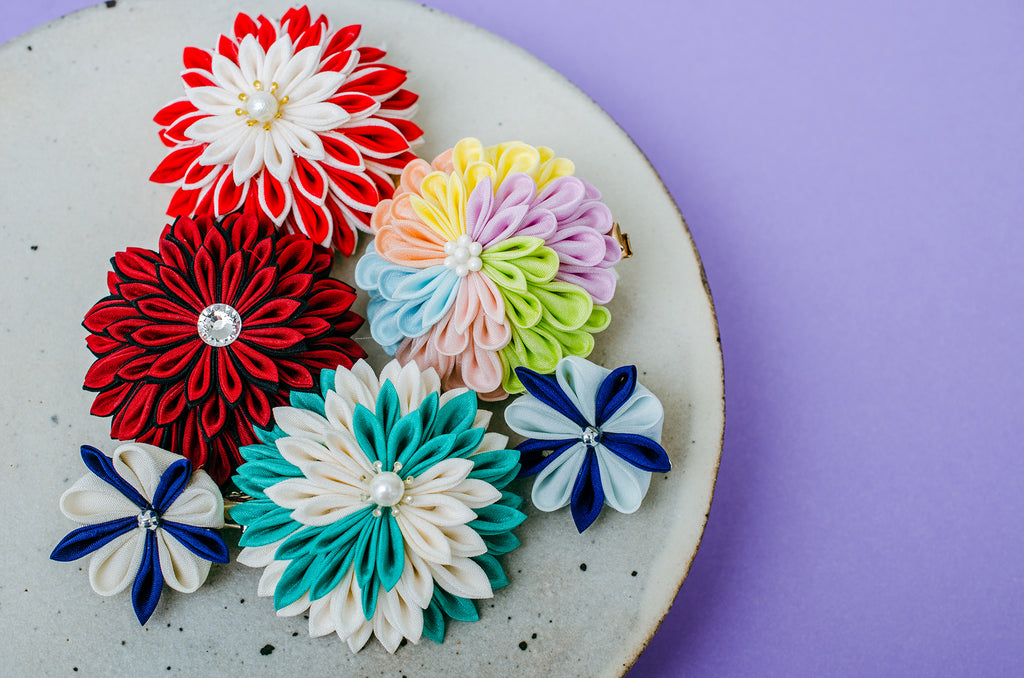
Information
- 住所:〒320-0802 栃木県宇都宮市江野町4-6えにらぼ内(オリオン通り商店街内)
- 電話:070-4538-6908
- メール:hokkori-wazakka@e-mail.jp
- 営業時間: 11:00 - 17:00
- 定休日:火・水曜(臨時休業あり)
- ウェブ:http://www.hokkori-wazakka.com
- instagram:@hokkori_wazakka_m
オーダー受注、 思い出のお着物のリメーク相談も承っております。
- Address:Enirabo, 4-6 Eno-machi, Utsunomiya City, Tochigi 320-0802 (within the Orion Street Shopping Street) 320-0802
- TEL:070-4538-6908
- EMAIL:hokkori-wazakka@e-mail.jp
- Business Hours: 11:00 - 17:00
- Closed Dates:Tuesday and Wednesday(plus occasionally closed)
- Website:http://www.hokkori-wazakka.com
- instagram:@hokkori_wazakka_m
We also accept orders for customized products, and offer consultation service for remodeling your memorable kimonos.
